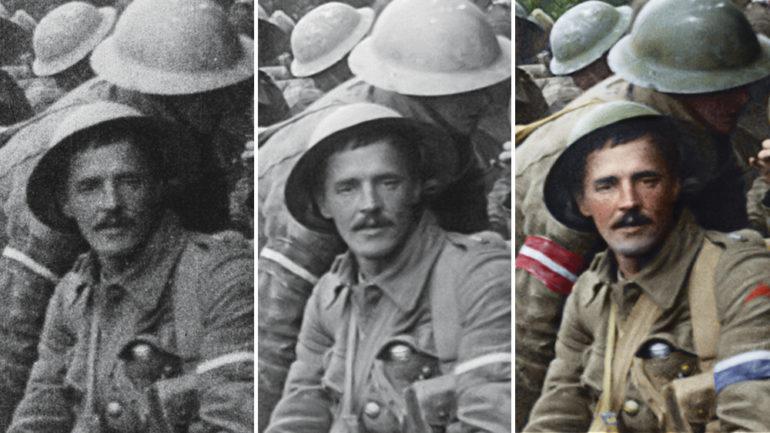How Peter Jackson’s ‘They Shall Not Grow Old’ Crew Carefully Restored Archival Footage
By Valentina I. Valentini
LOS ANGELES (Variety.com) – Peter Jackson’s World War 1 film “They Shall Not Grow Old,” already one of this year’s top-grossing documentaries, began with 100 hours of archival footage from World War I.
Clearly, creating a new film out of century-old footage presents daunting challenges, but producer-director Jackson and his team resourcefully pushed ahead, assembling the film out of original material — much of it never before seen — from the archives of the Imperial War Museum.
“Whenever we got clean, sharp footage to work with, we were in great shape,” says Wayne Stables, a visual effects supervisor at Jackson’s New Zealand-based Weta Digital. He worked outside his regular job to aid the filmmaker for six months as a colorist. Much of the footage was in bad condition, he says. “Most of it was moderately difficult, some of it was extremely difficult, and every so often God would smile upon us and we’d get something amazingly clean.”
The condition of the footage often depended on what stage during the war it was filmed. As cameras and technology improved, clips from the later war years tended to be better.
In a bid to make the material accessible and compelling, Jackson had the original footage colorized and converted to 3D. “Something that can happen when coloring old footage is that if it doesn’t look quite right, you actually have to wind it back to see what was happening inside the black and white,” says Stables, whose credits include “Avatar,” the “Lord of the Rings” trilogy and “Game of Thrones.” “Coloring old footage is usually done with broad strokes, but because we were trying to pull out so much of the detail, the level of care had to be that much higher.”
In addition to overseeing the 3D conversion process at Stereo D, Stables worked directly with Jackson, his producer Clare Olssen, senior colorists at New Zealand’s Park Road Post and Jackson’s full-time military historian Pete Connor. All collaborated on the multipronged restoration project, which, in addition to colorization and 3D conversion, included adjusting the footage to 24 frames per second as opposed to the old hand-cranked 12 fps. Every step had to be meticulous. Connor had to identify what was in each shot before they could color or convert it so that history would be respected. Stables says the process was more complicated than just saying, “That’s a British soldier; that’s a German soldier.” It was necessary to know what unit the soldiers were in, what type of soldiers they were, what the battlefield was and what time of year or day it was.
Jackson owns an extensive collection of WWI paraphernalia, which helped the team find items that matched and could be cross-referenced with the footage. The filmmaker also had traveled to photograph locations in Belgium, so he was often able to identify places where some of the action had taken place. Through this process, Stables was able to determine exactly what things like trains, buildings and even dirt would look like.
Notes the VFX supervisor, “I made sure what was coming through was historically accurate, technically correct and aesthetically what I knew Peter would want.”

